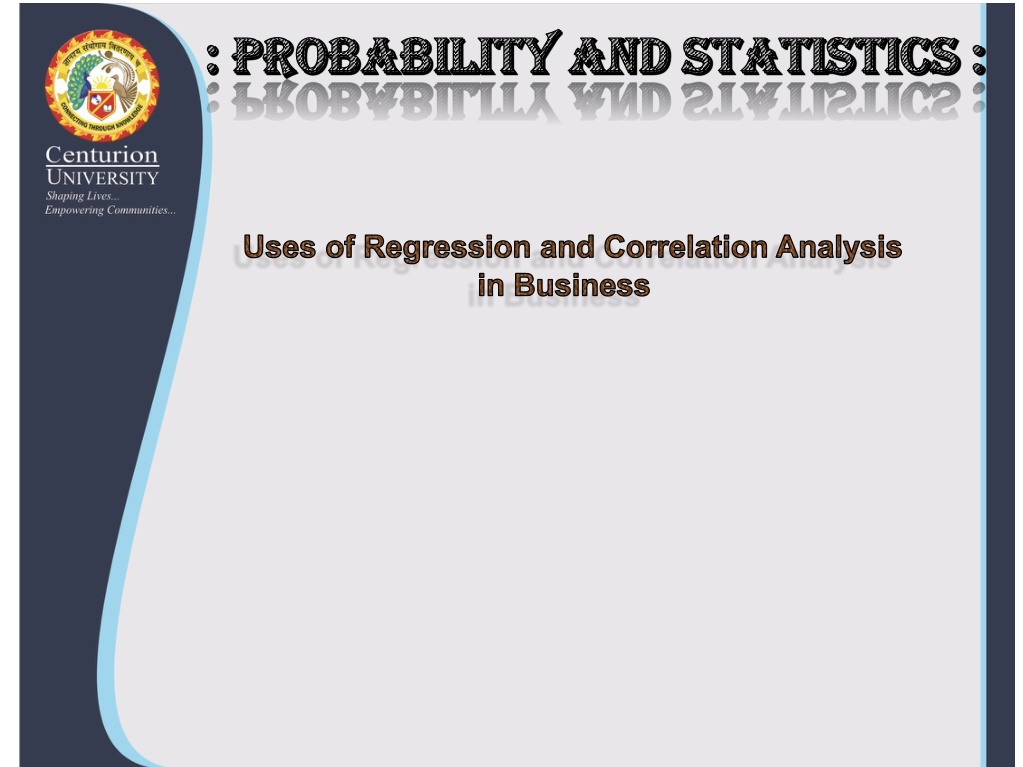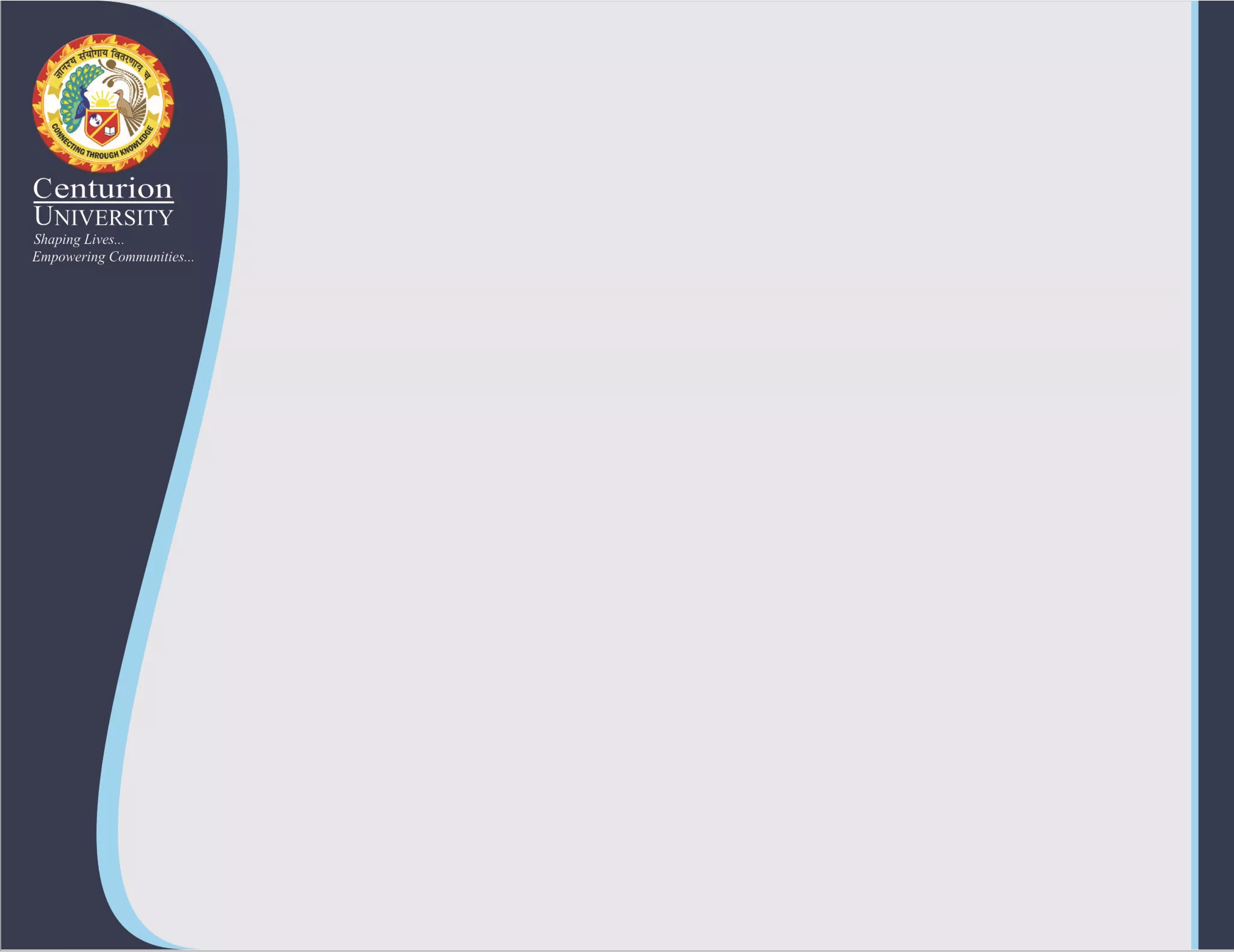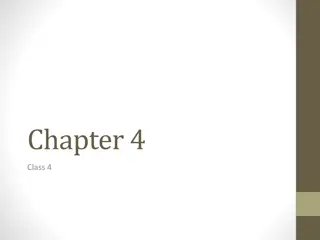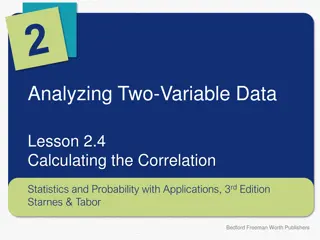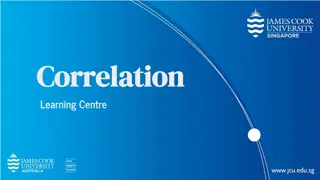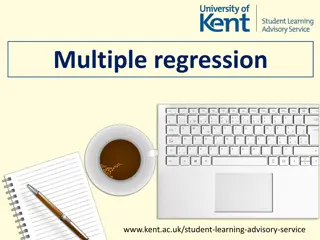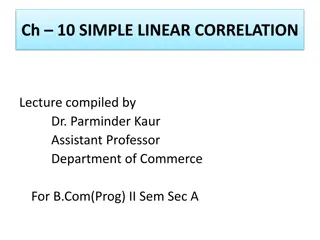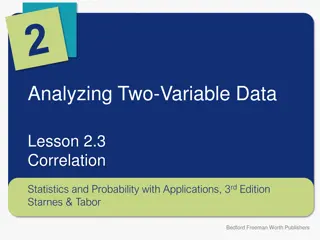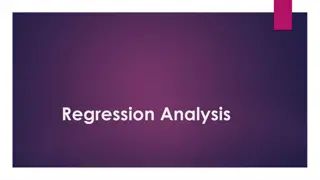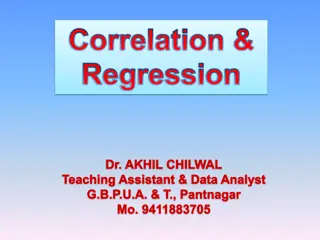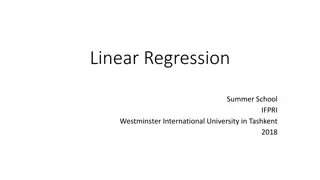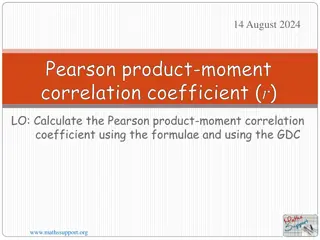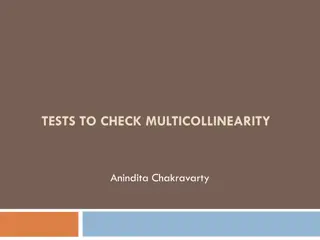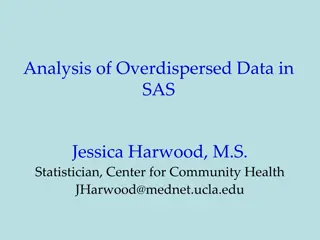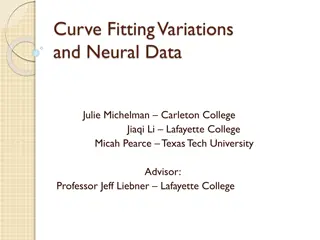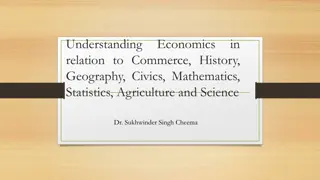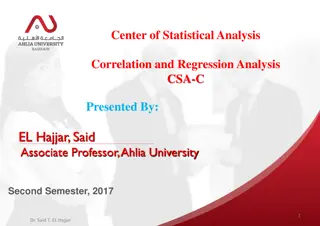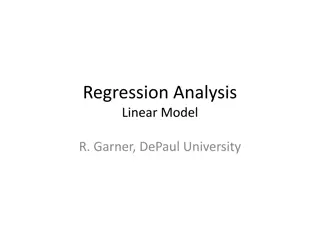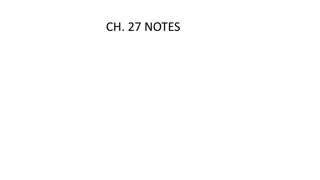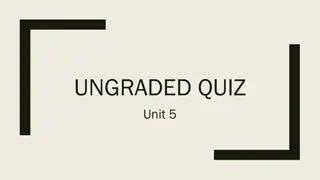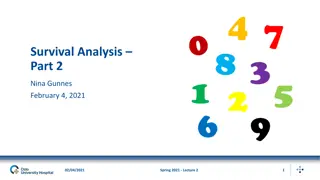Applications of Regression and Correlation Analysis in Business
Regression and correlation analysis play vital roles in business, helping to quantify relationships between variables. Regression analysis estimates relationships between dependent and independent variables, while correlation analysis quantifies associations between continuous variables. These techniques find applications in predictive analytics, operational efficiency optimization, error correction, decision-making support, and gaining new insights from data in various business scenarios.
Download Presentation

Please find below an Image/Link to download the presentation.
The content on the website is provided AS IS for your information and personal use only. It may not be sold, licensed, or shared on other websites without obtaining consent from the author. Download presentation by click this link. If you encounter any issues during the download, it is possible that the publisher has removed the file from their server.
E N D
Presentation Transcript
: PROBABILITY AND STATISTICS : : PROBABILITY AND STATISTICS : Uses of Regression and Correlation Analysis in Business
-:INTRODUCTION:- Correlation and regression analysis are applied to data to define and quantify the relationship between two variables. Regression analysis is a related technique to assess the relationship between an outcome variable and one or more risk factors or confounding variables. Correlation analysis, which is used to quantify the association between two continuous variables (e.g., between an independent and a dependent variable or between two independent variables).
-:REGRESSION ANALYSIS:- Regression analysis is a set of statistical processes for estimating the relationships between a dependent variable and one or more independent variables. Importantly, regressions by themselves only reveal relationships between a dependent variable and a collection of independent variables in a fixed dataset. Linear Regression. Types of Regression Analysis Logistic Regression. Ridge Regression. Lasso Regression. Polynomial Regression. Bayesian Linear Regression.
-:APPLICATIONS IN BUSSINESS:- 1. Predictive Analytics: Forecasting future opportunities and risks is the most prominent application of regression analysis in business. For instance, predicts the number of items which a consumer will probably purchase. However, demand is not the only dependent variable when it comes to business. RA can go far beyond forecasting impact on direct revenue. For example, we can forecast the number of shoppers who will pass in front of a particular billboard and use that data to estimate the maximum to bid for an advertisement. 2. Operation Efficiency: Regression models can also be used to optimize business processes. For example,A factory manager can create a statistical model to understand the impact of oven temperature on the shelf life of the cookies baked in those ovens. In a call center, we can analyze the relationship between wait times of callers and number of complaints.
3.Correcting Errors: Regression is not only great for lending empirical support to management decisions but also for identifying errors in judgment. For example, a retail store manager may believe that extending shopping hours will greatly increase sales. Hence, this analysis can provide quantitative support for decisions and prevent mistakes due to manager s intuitions. 4. Supporting Decisions: Businesses today are overloaded with data on finances, operations and customer purchases. Increasingly, executives are now leaning on data analytics to make informed business decisions that have statistical significance, thus eliminating the intuition and gut feel. By reducing the tremendous amount of raw data into actionable information, regression analysis leads the way to smarter and more accurate decisions. 5.New Insights: Over time businesses have gathered a large volume of unorganized data that has the potential to yield valuable insights. However, this data is useless without proper analysis. RA techniques can find a relationship between different variables by uncovering patterns that were previously unnoticed. For example, analysis of data from point of sales systems and purchase accounts may highlight market patterns like increase in demand on certain days of the week or at certain times of the year.
-:CORRELATION ANALYSIS:- Correlation analysis is a statistical method used to evaluate the strength of relationship between two quantitative variables. The variables may be two columns of a given data set of observations, often called a sample, or two components of a multivariate random variable with a known distribution. It is the process of studying the strength of that relationship with available statistical data. Types of correlation analysis Pearson correlation Kendall rank correlation Spearman correlation Point-Biserial correlation.
-:APPLICATIONS IN BUSSINESS:- 1.Projection Tool: The most valuable use of a correlation is in predicting the future of a business direction. If marketers and salespeople can identify a correlation between the behavior of consumers and events and a particular type of product or service, they can take advantage of the relationship to boost business and ultimately profits. 2.Direction Change: Just because a correlation is found does not mean it s always a good thing for a business.Sometimes correlations work inversely. For instance, if inflation rises and job losses go up in a market, a business can see fewer sales on their product because of lower consumer purchasing. This shrinkage or opposite direction from the first factor is an inverse correlation, which a business would want to anticipate and avoid. 3.Performance Measure: Correlations in how production processes in a business currently operate can also lead to identifying efficiencies that save money. If patterns show that use of a particular material drives up costs of production, the correlation can lead managers to try and identify substitute supplies that lower manufacturing cost.
-:CONCLUSION:- In any business there is a communication system which certain number of lines to communication data and voice communication we need to know the probability of how many lines are working at one time. Regressions not only allow us to determine whether a relationship exists but also to identify how strong that relationship is.The regression coefficient would determine which variables have the strongest relationship with the dependent variable. In business is a statistical method used to find the relations between two or more independent and dependent variables. One variable is independent and its impact on the other dependent variables is measured
